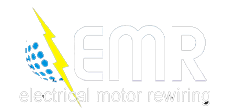Selecting An Alternating Current (A.C.) Generator
When selecting an Alternating Current (A.C.) generating set keep the following points in the mind :
· Total electrical load connected
· Voltage, frequency and phase
· Automatically started or not
· Sound emissions
Connected Load or Assessed Load
Assess the total connected load. A Generator set with an output in excess of this figure should be selected to allow for unforeseen events. It is important to always allow for future expansion.
Typical Voltage in Domestic and Commercial Applications
1. Residential
a. Housing – 230 Volts – Single Phase
b. Housing – 400 Volts – Three Phase
2. Commercial – 400 Volts – Three Phase
Types of Starting Systems and Controls
Recoil Start:
With a recoil starter rope.
Electric start:
This is normally available as standard equipment and on most large sets.
Remote Starting / Stopping:
Allows the Generator set to be started and stopped from a remote position with a remote button.
Manual change over:
A manual switch normally with a pilot light. This would light up when you have power and extinguished when experiencing a power outage. It would have a Mains/Neutral/Generator switch to ensure that it is either on mains or generator power, ensuring correct usage.
Automatic Standby to Mains:
Sets can normally be supplied to start automatically and take up the load when the mains fail. On return of the mains supply the load is automatically transferred to mains and the generator set shuts down. You will always experience a delay between mains failure and generator start up and supplying a full load. It is recommended that a Uninterrupted Power Supply (UPS) be installed to protect sensitive equipment such as computer systems, this will ensure no data loss or damage. Time delay on switch over can be between 30 seconds and 60 seconds. This time delay is dependant on the generator system installed.

